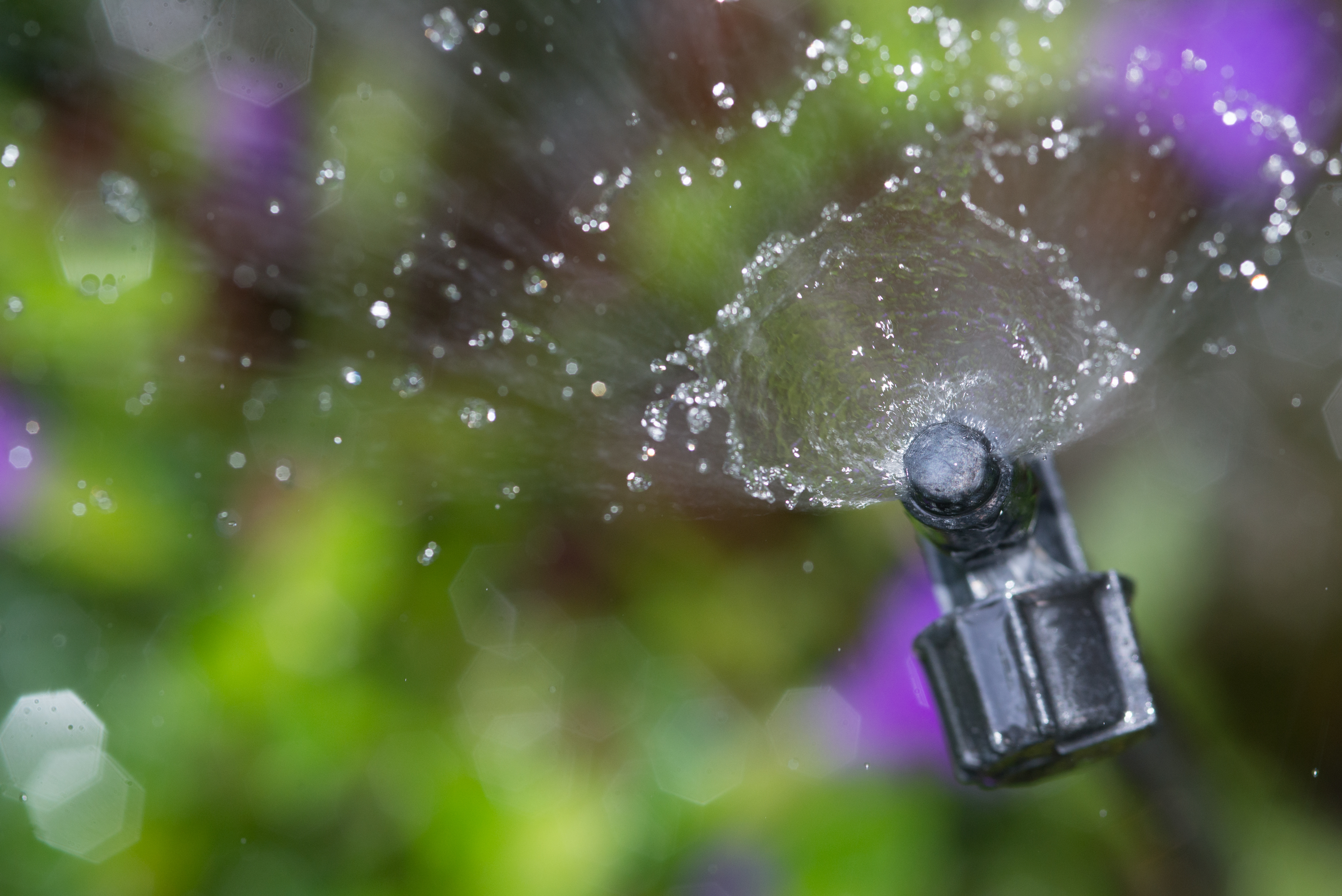Though the first half of July was determinedly unlike summer, saving water is a keystone to responsible gardening no matter the weather.
“We have a role to play in preserving our natural resources,” said Amy Jo Detweiler, a horticulturist with Oregon State University Extension Service. “A waterwise garden is one of the ways to do that regardless of the amount of rainfall where you live.”
For instance, in the high desert around Bend where she lives, rainfall during the growing season from May through September is only 5-7 inches. Except for natives, most plants won’t survive without supplemental water. On the Willamette Valley floor, rainfall averages 5 inches June through September. In both areas, planning for a low-water garden makes sense, she said.
In her publication An Introduction to Xerascaping in the High Desert, Detweiler lays out seven clear steps to developing a waterwise garden.
“The most important thing you have to consider is to give all these steps thoughtful consideration,” she said. “It’s not good enough to do a little here and there. Go through the steps from planning to plant selection and bring them into the landscape.”
Other Extension offerings to help with low-water gardening include the publication Conserving Water in the Garden and infographics Keys to Water-Efficient Landscapes, It Pays to Water Wisely and Landscape Maintenance to Conserve Water.
Amy Detweiler’s 7 steps to a waterwise garden
- Planning and design: Before starting or changing your garden, watch the sun and shade exposure throughout the day, check soil drainage in various parts of the yard and determine if there are soggy or especially dry areas. In soggy areas, plan for a possible rain garden or bioswale.
Use rain barrels or underground cisterns to capture whatever rainfall your climate provides to use in the garden during dry times. Extension’s publication Harvesting Rainwater for Use in the Garden can help with that.
Don’t leave hardscape out of the equation. Reduce wasted runoff water by using permeable materials, leaving space between flagstone in pathways or patios and reducing areas with hard surfaces.
Go through books and magazines and visit gardens to get an idea of what type of garden you’d like and be realistic about how much time and effort you want to put into a garden. Consider all of those elements when designing.
- Irrigation: Decide if you want or can afford an automatic system or will manually move hose-end sprinklers. Either way can be efficient, but must be used appropriately. Know your plants’ needs and don’t deliver too much or too little water; irrigate deeply and infrequently to encourage deep roots (see “soil” below). If you’re watering manually, setting a timer can help you remember when to change the sprinkler or turn it off.
If you use an automatic system, be sure to set the timer so that you use less water in spring and fall. Don’t “set it and forget it,” Detweiler emphasized. Look for new smart controllers that use weather and other detailed information to deliver exactly the amount of water needed down to the day, time and amount. They can save up to 30 percent of water.
- Soil: Create well-draining soil that provides a good environment for plants to get established. Whether your soil is sandy or contains mostly clay, adding organic matter will help improve aeration and water-holding capacity. For sandy soil, that will help keep water from draining through immediately. For clay soil, improving the soil will help water to drain better and keep plant roots from rotting. Water should move through the soil easily enough so that plant roots grow deeply and are able to access moisture during dry times without a lot of supplemental irrigation. Water deeply and infrequently to encourage deep roots. More information is available from the publication Improving Garden Soils with Organic Matter.
- Lawn: Plant only the amount of lawn for your needs – a place for children or dogs to play or a small area to set off garden beds. “Traditionally, yards are 90 percent lawn,” Detweiler said. “Try cutting it down to 60 percent or 40 percent and leave more space for trees, shrubs and perennials.” Use the most drought-tolerant grass and, if possible, change to lawn alternatives such as eco-lawns or ground covers like drought-tolerant wooly thyme that allows foot traffic.
- Plant selection: When choosing plants, go beyond aesthetics to look at their mature size, sun and water requirements. Plant them in areas matched to their needs. Although automatic irrigation systems can be adjusted to water different plants in a bed at different rates, it’s easier and more efficient to plant in “zones” that keep high-, medium- and low-water plants together. Native plants can be the basis of a waterwise garden, but there are plenty of other low-water plants to choose from, Detweiler said. To determine good choices, check plant labels, ask nursery personnel and use references.
- Mulch: Top dress soil with 2-4 inches of mulch. It will help keep the soil cool during hot weather and reduce evaporation, leaving more water in the soil for plant use. Mulch also helps keep weeds down and aids in erosion control. Whether you use organic mulch (wood chips, bark dust, etc.) or inorganic (gravel or small rocks) doesn’t make a difference, Detweiler said. All of them help keep moisture in so it’s a matter of personal preference.
- Maintain: Keep your garden properly weeded, pruned, mowed, watered and fertilized and plants will be healthier and more suited to fend off insects and diseases. Monitor your garden often and address problems quickly with least-toxic methods. Healthy plants need less water.

